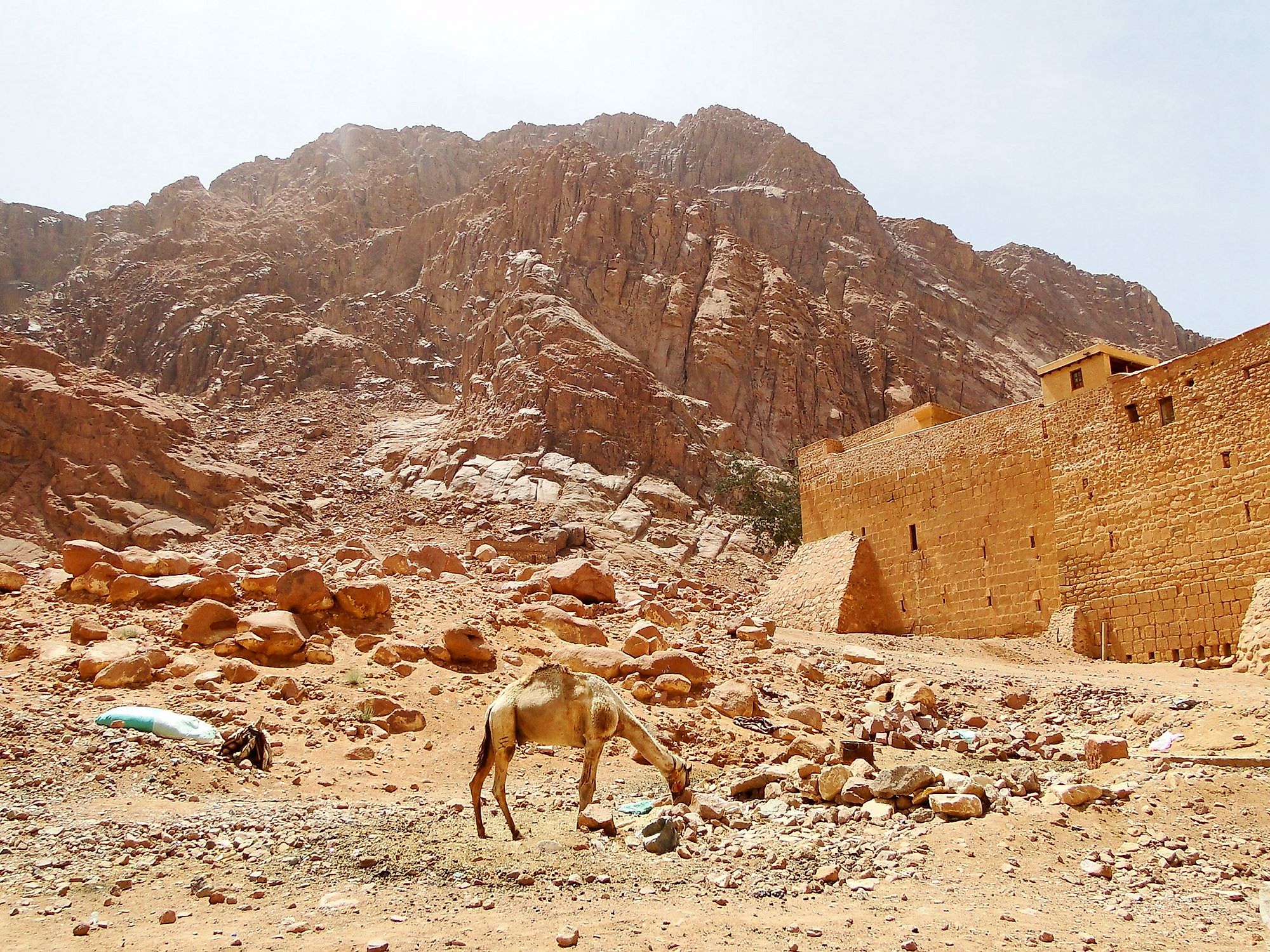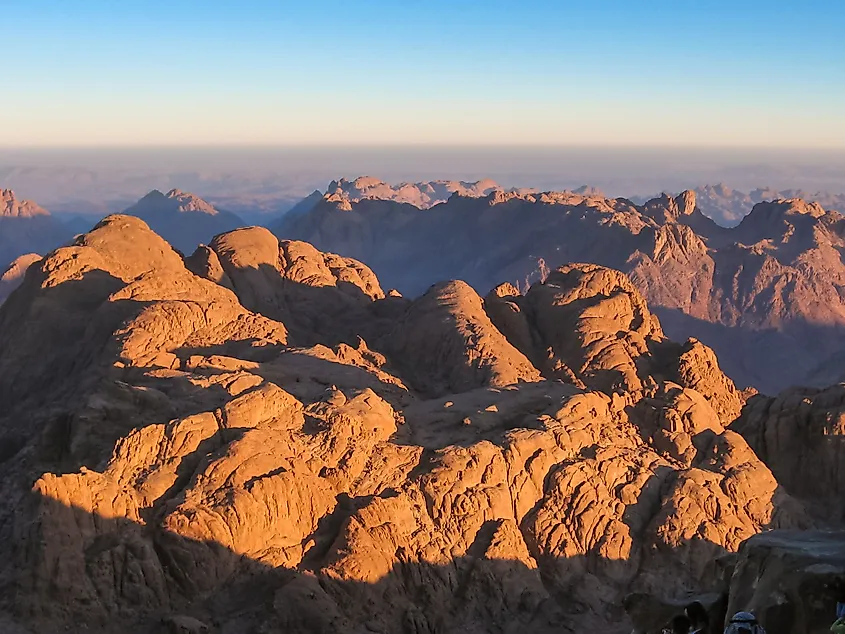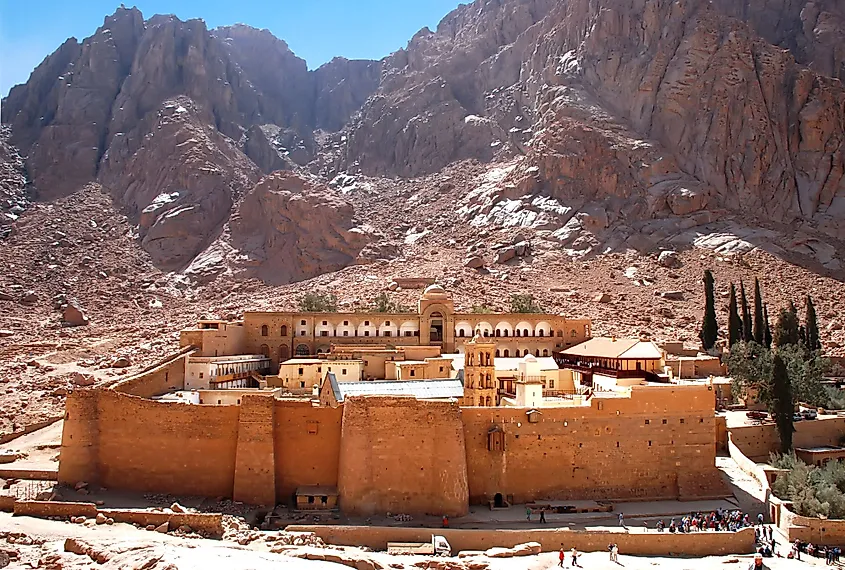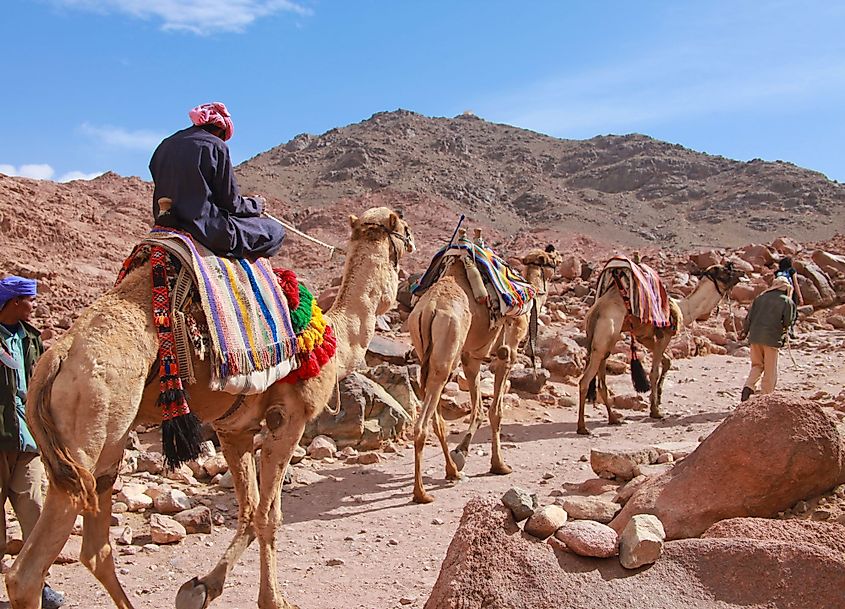
Mount Sinai
Traditionally referred to as Jabal Musa, Mount Sinai is a 2,285-meter-tall mountain that is situated in the south-central part of the Egyptian Sinai Peninsula. While there are several references to Egypt in holy books, Mount Sinai holds significant spiritual importance for several religions. According to the Bible and the Holy Quran, God appeared before Moses on the summit of the biblical Mount Sinai and gave him the Ten Commandments. Jewish tradition also states that Moses received the entire decalogue and corpus of the biblical text on Sinai. While scholars differ in terms of the precise location of the biblical Mount Sinai, the mountain itself is an official pilgrim site for Christians and Jews and the official site of the historical event in Judaism, Islam and Christianity. The world’s oldest inhabited monastery, Saint Catherine’s monastery, is located at the foot of the mountain. Given its great religious significance, Mount Sinai is also a popular touristic hotspot, attracting thousands of visitors annually to enjoy its beautiful surroundings or to partake in a breath-taking hike to the summit.
Location & Description

Mount Sinai is located about 447 km from the Greater Cairo Area in the city of Saint Catherine, in the south-central part of Sinai Peninsula. The mountain is moderately high compared to the remaining mountains within the same mountain range. Mount Catherine has the highest peak in the range and in Egypt, reaching an elevation of 2,629m. The most common method to reach Mount Sinai is by road given the remote location of the mountain. Major cities that are located close to the mountain include Sharm-el-Sheikh (230 km), Dahab (133 km), and Nuweiba (120 km). On top of the granite mountain is a mosque and a Greek Orthodox chapel - the Chapel of the Holy Trinity. Another remarkable spot below the summit is Elijah’s Plateau where it is postulated that the Biblical Prophet Elijah sought God’s presence. Moses’ cave is also located at the summit; it is said to be the location where Moses received the Ten Commandments from God.
History & religious significance

The area in the vicinity of Mount Sinai was first inhabited by the hermits in the early Christian era. The Saint Catherine Monastery was built in 530 CE, and it is still inhabited by a few monks from the Orthodox Church of Mount Sinai. The mountain was under Israeli rule from 1967 during the Six-Day War. The mountain returned to Egyptian rule again in 1979. The religious context and events associated with Mount Sinai makes it an important pilgrimage site. There are four main sacred mountains in the Judeo-Christian region of the Middle East, one of which is Mount Sinai. Moreover, there is controversy as to the actual name and location of Mount Sinai. Mount Sinai is referred to as “Mount Horeb” and the “Mount of God” in the Bible.
Moses, the founder of Judaism, is directly related to the historical and religious context of Mount Sinai. Moses was born as a son of a Hebrew slave in Egypt. In Egypt, the Hebrews were in bondage for four hundred years, but a prophecy by an Egyptian priest stated that the Hebrews will be freed from slavery by a Hebrew child. Upon hearing this prophecy, the Pharoah ordered that every Hebrew child should be killed. To protect Moses, Moses’ parents set their son adrift in a small basket along the Nile. Ironically, the daughter of the Pharoah found him and raised him as part of the royal family. Moses did not learn about his original people’s bondage to the Egyptians until he was forty years old. This triggered him to assault and kill an Egyptian overseer. Then, he fled into exile in the Sinai Peninsula. Moses then became a Shepherd, grazing his flock at the previously known Mount Horeb. One day, he encountered a voice coming out of a burning bush that was consumed by its flames. This voice instructed Moses to free the Hebrew people from bondage and bring them to the mountain. According to the book Exodus, the second book of the Torah, and the Hebrew Bible, the manifestation of the fire and the voice were God. The book also states that Moses climbed Mount Sinai twice to talk to God, where he spent forty days and forty nights. It was during this time when Moses received two tablets with the Ten Commandments in addition to the dimensions to construct the Arc of the Covenant, a box-like shrine that would carry the tablets. After the box was constructed, Moses and his people left Mount Sinai. There is no archaeological evidence stating that Mount Sinai is the same as Jabal Musa. During the early Christian era, a 4th century Byzantine empress called Helena built the first church in the area of Jabal Musa as a way to confirm the authenticity of the mountain. Remarkably, the church was built at a site where a rare species of Rubus sanctus grows, a shrub that the monks believe is the burning bush that Moses once encountered.
Recreation

The religious aspect of Mount Sinai designates it as a touristic hotspot in the Sinai Peninsula. Mount Sinai plays an important role in supporting the Egyptian economy. Tours to the mountain are usually part of bigger tours to the Saint Catherine Monastery, attracting visitors mainly coming from Sharm-El-Sheikh, Dahab or Cairo. The route to the summit is lined with remnants of older chapels and it is called the Path of Moses. The Path of Moses, also known as Siket Sayidna Musa, is the direct route to the summit despite being steep. This route first requires taking the 3,750 steps of penitence that were carved by monks. While the climb via this route is quite strenuous, it offers great views and vantage points. The second route leading to the summit is the Camel Path, also known as Siket El Bashait, which is gentler but longer, requiring approximately 2.5 hours on foot. As the name indicates, camels can be taken through the majority of the route. Both paths lead to Elijah’s Hollow, a natural amphitheater 750 steps before the summit. The summit offers spectacular views of the Sinai Peninsula, the nearby Mount Catherine, and a dry, desert landscape.











